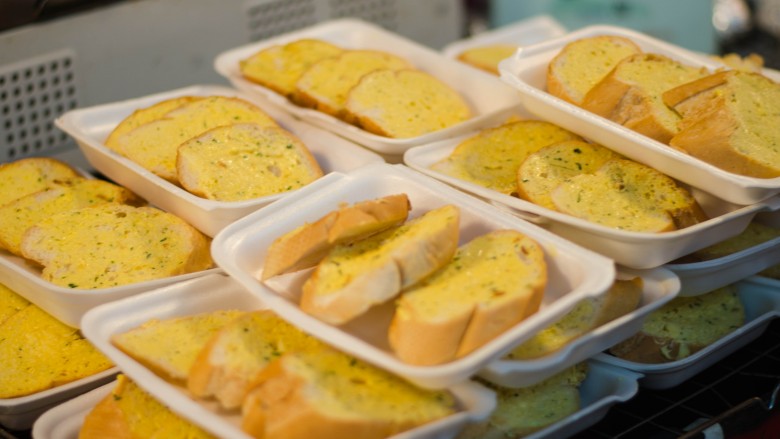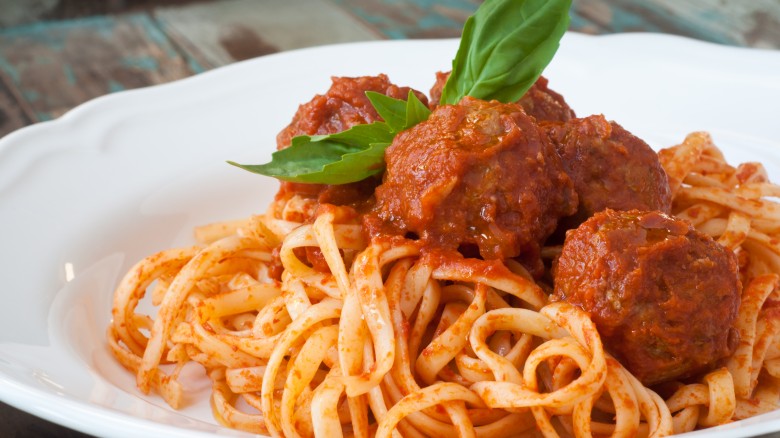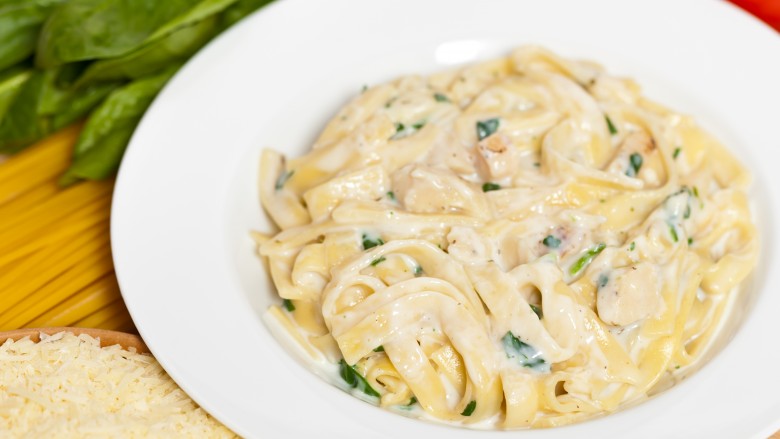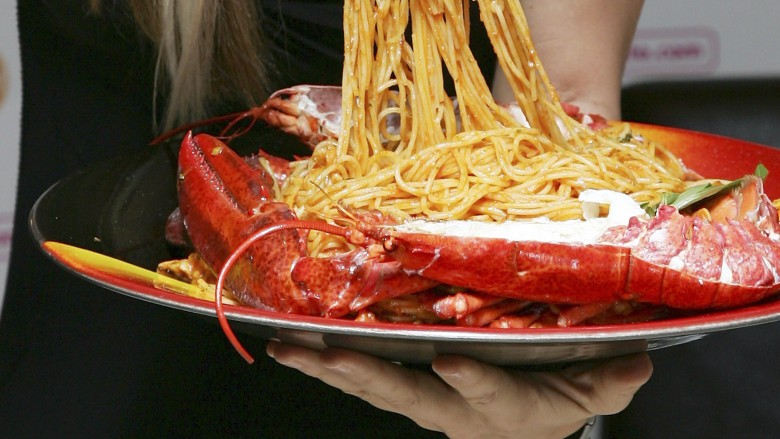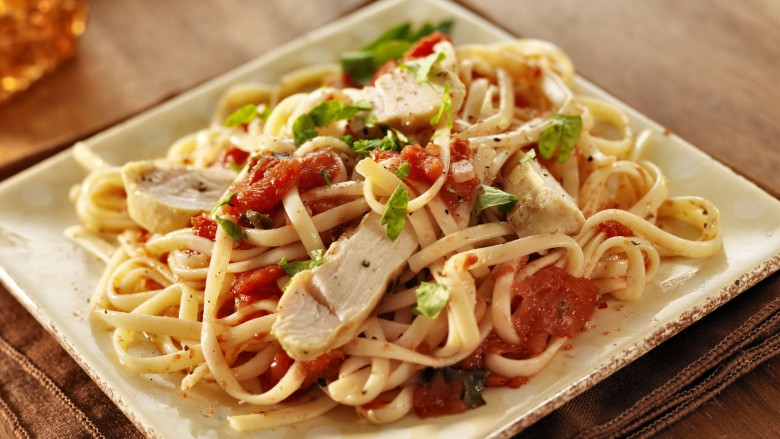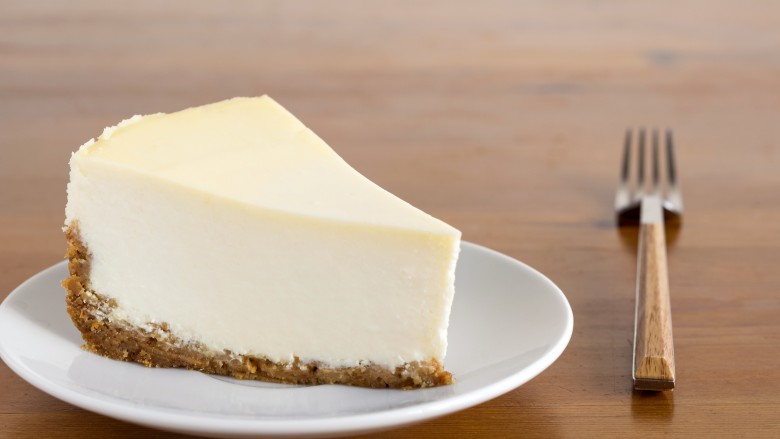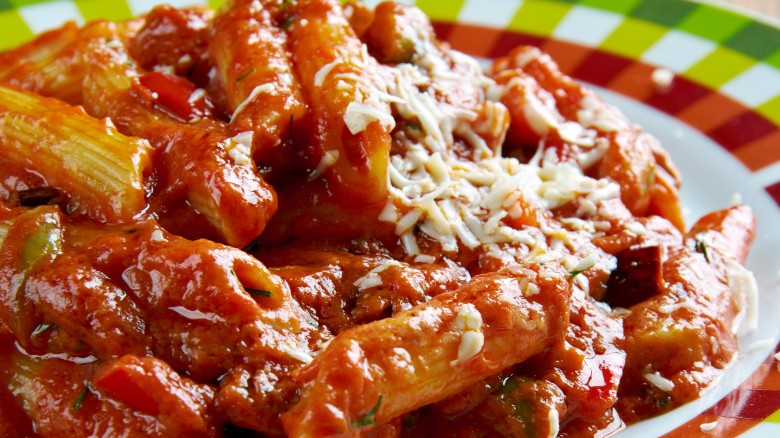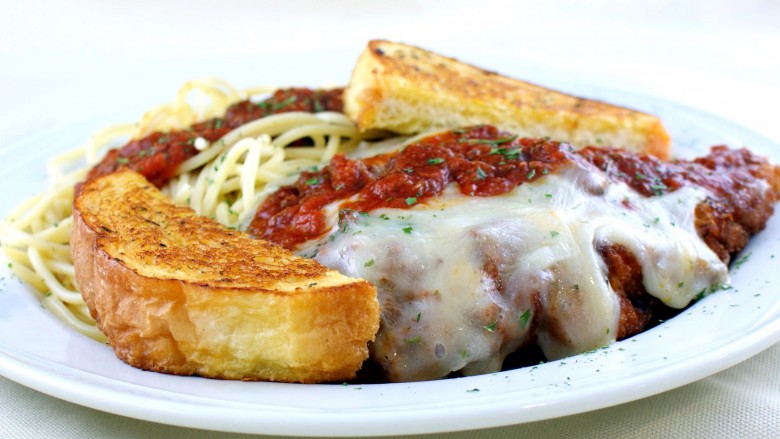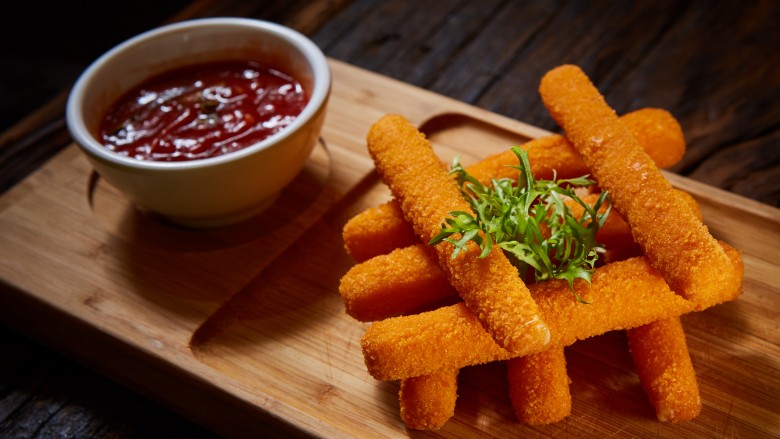Italian Restaurant Decisions Someone Should Have Been Fired For
As a professional eater, I happily declare that authentic Italian food tastes like a dream. Deeply flavorful, subtle, and complexly satiating, the dishes bring together traditional cooking techniques, classic preparations, seasonal produce, and top-quality ingredients — all of which result in warming culinary experiences that stay with you long after the meals have ended. On the flip side, the popularity of Italian cuisine has created a saturated market in which authenticity and quality have taken a dive.
If you are indeed seeking to experience the divine nature of good Italian eating, I strongly recommend steering clear of some widely available yet not always satisfying "Italian" menu items. Who decided these were a good idea? You're fired! (Only sort of kidding.)
Garlic bread
While garlic bread may fleetingly satisfy your immediate craving for hot buttery carbs, it can't exactly be considered authentic Italian cuisine. Even though this indulgent starter dish of toasty garlic and butter-laden bread is ubiquitous in the Italian restaurants you and I have come to know, it is decidedly un-Italian. Not to mention incredibly unhealthy and detrimental to any semblance of a balanced diet. I would go as far as to argue for its banishment from these eateries altogether.
In addition to filling you up in an entirely unhealthy artery-clogging fashion before your meal even begins, garlic bread is a gross bastardization of an actual Italian dish: bruschetta. (And as a public service if you ever order bruschetta, the dish is pronounced broo-SKAYT-ah.) Unlike garlic bread—or heaven forbid, cheesy garlic bread, which is topped with unseemly amounts of Parmesan or mozzarella—bruschetta prep eschews the butter altogether. I know, very un-American. Instead, thick slices of Italian or French bread are rubbed with cut garlic for subtle flavor and drizzled with olive oil. Additional toppings may include diced tomatoes, thinly sliced cured meats, or roasted peppers. Copious amounts of butter and cheese? No.
Spaghetti and meatballs
Bowls of spaghetti and gigantic meatballs are served in Italian eateries everyday, yet this beloved dish isn't even considered Italian — well, at least not by actually Italians. Contrary to what Americanized restos would have you believe, the Smithsonian says you'd have a lot of trouble finding this item on the menu in Italy. While Italians make a smaller version of meatballs adorably called "polpette," those little guys are usually eaten by themselves or in soup, not dripping with tomato sauce over a heap of plain spaghetti.
In a traditional Italian restaurant, you may order pasta and polpette — separately. Pastas are enjoyed as a first course during a meal, the "primo" if you will. The polpette or another dish of meat, chicken, or seafood is served as the second course, the "secondo." So, yes, you can have your spaghetti and meatballs, maybe just not in the saucy manner you've grown accustomed to from childhood viewings of Lady and the Tramp.
Fettuccine Alfredo
While you can definitely find creamy sauces made with butter and Parmigiano-Reggiano (al burro) in classic Italian restaurants, you may notice the absence of a pasta dish we know as fettuccine Alfredo. According to Saveur, the indulgent dish was first created by Alfredo di Lelio, a Roman restaurateur who wanted to help his wife regain her appetite after she gave birth to their son. His answer to that problem just following the turn of the 20th century was what my response would probably be today: Add more butter. By incorporating a lot more butter into his traditional pasta al burro preparation, he inadvertently created a decadent dish that became wildly popular — and not just with his wife.
Although this dish is technically Italian, it's a modern and excessively indulgent version of the traditional dish. In a more authentic Italian dining scenario, you're more likely to encounter various pastas al burro, made with Parmigiano-Reggiano mixed with much less butter than fettucine Alfredo. Maybe try the suddenly trendy but still authentically Italian dish of cacio e pepe, which is made by tossing pasta with cheese and black pepper. The upside of seeking out a more traditional version? You can enjoy the nuances of truly delicious pasta accented by — rather than slathered in — a light sauce.
Lobster fra diavolo
Yet another Italian-American creation not likely to be found in Italy, lobster fra diavolo certainly seems Italian. This dish of luxurious lobster served with zesty red sauce and linguine is incredibly popular at upscale eateries, yet most Italian chefs and cookbook authors remain dubious, and many claim it likely originated in New York. Renowned chef and Italian cookbook author Nancy Verde Barr says "it was restaurant food and never something we made at home."
As with spaghetti and meatballs, lobster fra diavolo mixes a traditional first course with a traditional second course. Yes, enjoy pasta as the primo and seafood as the secondo, but sloshing them around together in splashy tomato sauce is sacrilegious, not to mention messy. That said, in some parts of Southern Italy, seafood can be incorporated into pasta dishes even though you'll rarely find those concoctions spicy, heavy, and overloaded. If you are in search lobster fra diavolo's bold heat, try ordering pasta all'Arrabbiata, which ups the ante on spiciness with a generous use pepperoncini.
All chicken on pasta dishes
Simply put, you will never find chicken served with pasta in Italy. While you might encounter meat incorporated into pasta dishes by way of the sauce, like in bolognese or ragu, chicken is an entirely different story. It is a second course, period.
If you absolutely need to eat your protein with your carbs, try ordering a seafood pasta dish. Still, those specialties won't have whole fish served atop pasta. Rather the fish would be broken up and cooked into the sauce for depth of flavor. While you might not find these seafood pasta dinners everywhere, they are rich, flavorful, and worth seeking out Sicilian restaurants for.
Cheesecake
Cheesecake as we know it won't be on any restaurant menus in Italy. Too rich, too sweet, too much artifice, and too little substance. While all of those qualities may suit an American palate, they don't cut it for the natives of the boot-shaped country we often take culinary cues from. Sure, you can order this luxurious dessert after dinner at many Italian-American eateries, but I can't guarantee its authenticity since there are so many varieties that veer away from Italian ingredients like high-quality ricotta.
Order traditional cassata siciliana for an after-dinner treat that approximates the richness of the American cheesecake you're used to. This delectable sponge cake is steeped in liquor, slathered with complex almond paste, and subtly iced for a touch of sweetness.
Penne alla vodka
Um, please don't do it! If you've gone through the trouble of getting dressed to dine out at an Italian restaurant, why seek out penne alla vodka, a dish that defies logic? In Italy, you're unlikely to find pastas served in sauces made with actual cream. Although the dish may have first appeared in Italy, it never really stuck. Since when is vodka an Italian liquor? Since vodka manufacturers wanted Italians to use more of it, that's when. Plus you can't even taste it in the sauce once it completely evaporates during cooking.
Let's get a grip and take a step back. Order some traditional courses from a reputable Italian establishment and enjoy some alcohol alongside your meal if you insist. Maybe a nice Italian wine?
Chicken or veal Parmigiano
If you're surprised by the idea that Italians don't want to top their pastas with chicken, their aversion to chicken or veal Parm, an Italian-American favorite, may shock you a lot. This popular dish of breaded meat topped with melted cheese may be prevalent wherever red-and-white checkered tablecloths are found, but it is not one you'd likely order at a traditional Italian eatery.
That said, southern Italian regions like Sicily do offer a vegetarian version of veal Parmigiano made with eggplant instead: melanzane Parmigiana consists of layers of fried eggplant slices, red sauce, and cheese. Mmmmm.
Mozzarella sticks
You can order a plate of mozzarella sticks at many Italian (and non-Italian) eateries. While it's hard to resist breaded cheese that's been deep-fried and served with zesty marinara sauce for zealous dipping action, you certainly wouldn't be partaking in a culinary tradition that's particularly Italian. This greasy favorite is said to have originated in France during the 14th century. Who knew?
If you must munch on something before the actual meal begins, try indulging in a classic Italian antipasto instead mozzarella sticks. These antipasto spreads often include all the good stuff in great varieties: cured meats, olives, cheeses, and pickled veggies.
Salad dressings
Even though you'll find various types of dressings liberally drizzled on all sorts of salads in Italian eateries, they aren't really used by Italians in Italy. While Americans may be accustomed to dousing greens in copious amounts of ranch or Caesar, the practice is hardly common in the motherland.
Instead, reach for the olive oil and vinegar, drizzling with a light touch, of course. At a high-quality restaurant, you'd ideally find some of the best oils and vinegars at your disposal.
There you have it. Beware of these unsatisfying pitfalls the next time you're dining out at your favorite Italian restaurant. Since the menu is likely to be ten pages long, I'm sure you'll have no trouble finding alternatives.

